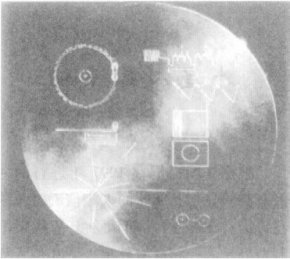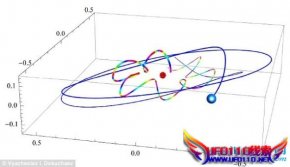究竟什么时候能够成为“火星人”
我们认为火星是一个跟地球环境很接近的星球。尽管他们在我们太阳系里是第三和第四的星球,但是地球和火星的行程过程可能很不一样。根据两位科学家现在的估测,地球和火星之间巨大的地理性差异可能是因为在太阳系形成后,火星的成长史只有短短的二百万到四百万年。1
In contrast, Earth grew to its full size 50 to 100 million years after the solar system’s birth, via collisions with other small bodies in the solar system.
相反,太阳系形成之后,地球经历了五千万到一亿年,通过无数太阳系里小的星体相互碰撞才有了今天的体积。
Mars’s rapid formation might help explain why it is so small – the runt of the planetary litter among inner worlds in our solar system – say the study’s co-authors.
这次研究的合作者说,火星的迅速形成可以解释为什么它的体积那么小的原因,可以说它是我们太阳系内的侏儒行星了。
Nicolas Dauphas at University of Chicago and Ali Pourmand at University of Miami made the suggestion of Mars’ rapid formation in a study published in the May 26, 2011 issue of the journal Nature.
来自芝加哥大学的尼古拉斯·道法斯和迈阿密大学的阿里·布尔曼德在一篇学术论文中提出火星的迅速形成的说法。这篇论文发表在2011年5月26日的《自然》期刊上。
Hubble Space Telescope took this picture of Mars on June 26, 2001, when Mars was approximately 68 million kilometers (43 million miles) from Earth - the closest Mars has been to Earth since 1988. Image Credit: NASA and ESA
哈勃太空望远镜在2001年6月26日拍摄的火星照片,那时候火星远离
地球将近6800万公里(4300万英里),这是1998年以来距离地球最
近的一次。图片所有权: NASA和ESA。
Relative size of the inner planets of the solar system (from l-r): Mercury, Venus, Earth, and Mars. New research supports the idea that Mars owes its small size to its relatively rapid formation. Image Credit: Lunar and Planetary Institute
太阳系内部行星的相对体积(拍自1-r):水星、金星、地球和火星。
新的研究支持了火星的体积小是因为其相对迅速的形成过程的观点。
图片所有权:月球和行星研究所。
Mercury, Venus, Earth, and Mars are sometimes called the terrestrial planets. In other words, the assumption has been that they are like Earth, formed in a similar way and time. But Mars probably should not be considered terrestrial, or Earthlike, said Dauphas, who is an associate professor in geophysical sciences:
水星、金星、地球和火星通常被称为陆地行星。换种说法,我们已经假定他们都像地球了,用相似的方式和在差不多的时间内形成。但是,火星可能不应该被成为陆地行星,或者类地行星,道法斯如此说道。他是一位地球物理学领域的副教授。
Earth was made of embryos like Mars, but Mars is a stranded planetary embryo that never collided with other embryos to make an Earthlike planet.
地球是由类似于火星一样的胚胎组成,但是火星是一个被遗忘的行星胚胎,
它从未与别的胚胎相碰撞,从而形成类地行星。
When he speaks of embryos, he is speaking of bodies that formed within a vast disk of gas and dust – with the infant sun at its center – that existed four-and-a-half billion years ago when our solar system was first forming. Planetary embryos are thought of as bodies big enough to have undergone at least some internal melting, so that the interiors of these bodies have begun a process of forming layers. Planetary embryos are believed to form out of kilometer-sized planetesimals that attract each other gravitationally and collide.
当他说到胚胎时,他是在说在一个充满气体和尘埃的巨大磁盘中形成的物体,存在于四十五亿年前太阳系刚刚形成的时候,并以幼年时期的太阳为它的中心。行星胚胎被认为是足够大的物体,至少可以进行一些内部融合,于是,这些物体的内部就开始了形成层的过程。据信,行星胚胎最终形成直径达到数公里的小行星,这样就能在相互之间产生重力吸引力,最终产生碰撞。
According to planet formation theory, there was a process of building that went on in the early solar system – smaller planetesimals to larger planetary embryos to actual planets. The idea here is that – while Earth formed slowly from planetary embryos colliding – Mars is itself a solitary planetary embryo that formed very early in the history of our solar system.#p#副标题#e#
根据行星形成理论,在太阳系早期,存在一个形成过程,更小的小行星形成稍大的行星胚胎,最终形成现在的行星。这里想表达的观点是,当地球从行星胚胎间相互碰撞缓慢形成时,火星却是一个孤独的行星胚胎,在太阳系历史上形成得很早。
The new work provides supporting evidence for this idea, which was first proposed 20 years ago on the basis of planetary growth simulations. The new evidence likely will change the way planetary scientists view Mars. Pourmand, who is an assistant professor in marine geology and geophysics, said:
新的发现为这个观点提供了支持证据,这个观点首先是在20年前的行星成长模拟中提出的。新证据可能将会改变行星科学家们看待火星的态度。布尔曼德是一位在海洋地质和地球物理方面的副教授,他这么说:
We thought that there were no embryos in the solar system to study, but when we study Mars, we are studying embryos that eventually made planets like Earth.
我们以前认为在太阳系,没有胚胎值得去研究,但是当我们研究火星时,
我们就是在研究最终形成类似地球的行星胚胎。
There have been large uncertainties in the formation history of Mars because of the unknown composition of its mantle, the rock layer that underlies the crust. Dauphas said:
因为其地幔的未知混合物,火星形成历史上还有诸多不确定因素。地幔是一个位于地壳下面的岩石层。道法斯说道:
Now we can shrink those uncertainties to the point where we can do interesting science.
现在我们能将这些不确定因素范围缩小到能开展有趣科学实验的程度。
Dauphas and Pourmand were able to refine the age of Mars by using the radioactive decay of the elements hafnium to tungsten in Martian meteorites – that is, meteorites from the planet Mars that have come to Earth. Read more about Martian meteorites here.
道法斯和布尔曼德能通过在火星陨石中铪元素变成钨元素的放射性衰变过程来精确火星的年纪。那就是说,曾有火星的陨石坠落到地球。我们在这里了解更多的火星陨石信息。
To read the details of the process by which Dauphas and Pourmand studied radioactivity decay in Martian meteorites – and arrived at their conclusions – see a May 25, 2011 press release from University of Chicago.
要了解道法斯和布尔曼德用来研究火星陨石的放射性衰变的这个程序细节,并得出他们的结论,可以去看看2011年5月25日芝加哥大学出版社的刊物。
Bottom line: Scientists Nicolas Dauphas of the University of Chicago and Ali Pourmand of the University of Miami have conducted a study on the formation of Mars, published in the May 26, 2011 issue of the journal Nature. Their results show that Mars formed in as little as two to four million years after the birth of the solar system. This is more quickly than Earth formed and would explain the small size of Mars. The study was derived from an examination of radioactive decay in elements found in Martian meteorites.
结果:芝加哥大学的科学家尼古拉斯·道法斯和迈阿密大学的科学家阿里·布尔曼德开展了一项关于火星形成的研究,发表在2011年5月26日的《自然》杂志上。他们的研究结果显示,火星仅仅形成在太阳系形成之后的两百万到四百万年间。这远比地球形成要快,并且能解释为什么火星体积那么小的原因。这个结果来自对火星陨石的元素放射性衰变研究。
文章来源:ufo110线索网http://www.ufo110.net/原文地址:http://m.ufo110.net/Aliens/ETnews/1078.html





